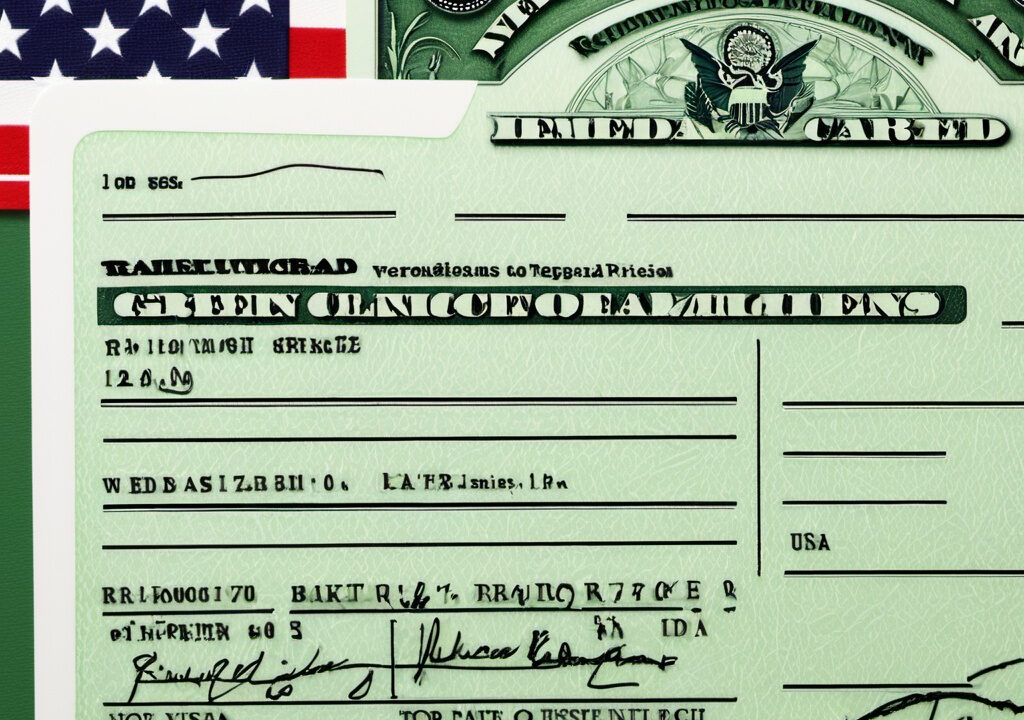If you’re a religious worker on an R-1 visa and you’re interested in becoming a permanent resident of the United States, you may be eligible to apply for a green card. A green card gives you permanent residency, allowing you to live and work in the U.S. indefinitely. This article will explain the requirements for moving from an R-1 visa to a green card in easy-to-understand terms.
What is an R-1 Visa?
The R-1 visa is a non-immigrant visa for foreign religious workers who come to the U.S. to work for a non-profit religious organization. It allows ministers, priests, missionaries, and other religious workers to live and work in the U.S. temporarily. The visa is valid for up to 5 years.
While the R-1 visa is temporary, you can apply for a green card to live in the U.S. permanently if you meet certain conditions.
What is a Green Card?
A green card is a document that grants you permanent residency in the U.S. It allows you to live and work in the U.S. without time limits. You can also apply for U.S. citizenship after holding a green card for a certain period.
For more information, you can speak to Happy Face
Can R-1 Visa Holders Apply for a Green Card?
Yes, R-1 visa holders can apply for a green card. However, not everyone on an R-1 visa qualifies. You must meet specific requirements before you can apply. The green card process for religious workers typically falls under the EB-4 Special Immigrant Religious Worker category.
Requirements for Moving from an R-1 Visa to a Green Card
To apply for a green card while on an R-1 visa, you and your religious organization must meet certain requirements. These include:
1. Work Experience
You must have worked in a religious capacity for at least 2 years before applying for a green card. This work experience can include time spent working both in the U.S. on your R-1 visa and outside the U.S. as long as it’s for the same religious organization or denomination.
2. Full-Time Work
Your job in the U.S. must be full-time, meaning at least 35 hours per week. The role should be related to your religious duties, such as being a minister, missionary, or performing other religious functions like teaching or spiritual counseling.
3. Qualifying Religious Organization
The religious organization sponsoring you for a green card must:
- Be a non-profit religious organization in the U.S.
- Be able to prove that it is tax-exempt under U.S. law.
- Have the financial ability to support you in your role.
The organization must file an official petition for you with the U.S. Citizenship and Immigration Services (USCIS).
4. Intent to Continue Religious Work
You must show that you intend to continue working in a religious capacity in the U.S. after you get your green card. This means that you plan to stay in your religious role with the same organization or denomination.
5. Filing the Petition (Form I-360)
The green card process for R-1 visa holders begins with the religious organization submitting Form I-360 (Petition for Amerasian, Widow(er), or Special Immigrant) on your behalf. The religious organization must provide proof of their non-profit status, as well as your employment in a religious role.
6. Admissibility to the U.S.
To be eligible for a green card, you must be “admissible” to the United States. This means you cannot have any criminal records, immigration violations, or health issues that would prevent you from being allowed to stay in the U.S.
For more information, you can speak to Happy Face
The Green Card Application Process
Now that you know the basic requirements, let’s walk through the actual process of applying for a green card.
Step 1: Filing Form I-360
The first step in the process is for your religious organization to file Form I-360 with USCIS. This is a petition that shows you meet the qualifications to apply for a green card as a religious worker. The petition will include documentation such as:
- Proof of your two years of religious work experience
- Evidence that the religious organization is tax-exempt
- Proof of the organization’s ability to pay you
Once USCIS approves the petition, you can move on to the next step.
Step 2: Filing Form I-485 (Adjustment of Status)
After your Form I-360 is approved, you will need to file Form I-485 (Application to Register Permanent Residence or Adjust Status). This form is what you use to apply for your green card.
When filing Form I-485, you will need to provide:
- Your passport
- Proof of your R-1 visa status
- Financial information
- Medical examination results
- Any other relevant documentation requested by USCIS
If you are already in the U.S. on an R-1 visa, you can file this form to adjust your status to a permanent resident without leaving the country.
Step 3: Attend a Biometrics Appointment
After submitting your Form I-485, you will be scheduled for a biometrics appointment. This is where USCIS will take your fingerprints, photograph, and signature for security checks.
Step 4: Attend an Interview (if required)
Sometimes, USCIS may require you to attend an interview as part of the green card process. During the interview, they may ask you questions about your work, your religious organization, and your background. It’s important to be honest and provide accurate information.
Step 5: Wait for Your Green Card Decision
Once all the steps are complete, you will need to wait for USCIS to make a decision on your green card application. Processing times can vary, but it usually takes several months to receive a decision. If your application is approved, you will receive your green card in the mail.
For more information, you can speak to Happy Face
Can You Work While Waiting for Your Green Card?
Yes, if you are already in the U.S. on an R-1 visa, you can continue working while your green card application is being processed. You may also apply for a work permit (Employment Authorization Document) if you need additional proof of your ability to work while waiting for the green card decision.
Benefits of Moving from R-1 Visa to a Green Card
There are several benefits to moving from an R-1 visa to a green card:
- Permanent Residency: You can live and work in the U.S. indefinitely without worrying about visa renewals.
- Family: Your spouse and unmarried children under 21 may also be eligible to apply for green cards as your dependents.
- Path to Citizenship: After holding a green card for several years, you can apply for U.S. citizenship if you meet the eligibility criteria.
- Travel Freedom: A green card allows you to travel in and out of the U.S. more easily compared to a non-immigrant visa.
For more information, you can speak to Happy Face
The transition from an R-1 visa to a green card can be a straightforward process if you meet the necessary requirements. By working with a qualified religious organization, gathering the required documentation, and filing the correct forms, you can achieve permanent residency in the U.S. The key steps include having two years of religious work experience, working for a qualifying non-profit religious organization, and submitting Form I-360 and I-485 to USCIS.
If you’re considering making the move from an R-1 visa to a green card, it may be helpful to consult with an immigration attorney to ensure your application process goes smoothly and that you meet all the requirements.








